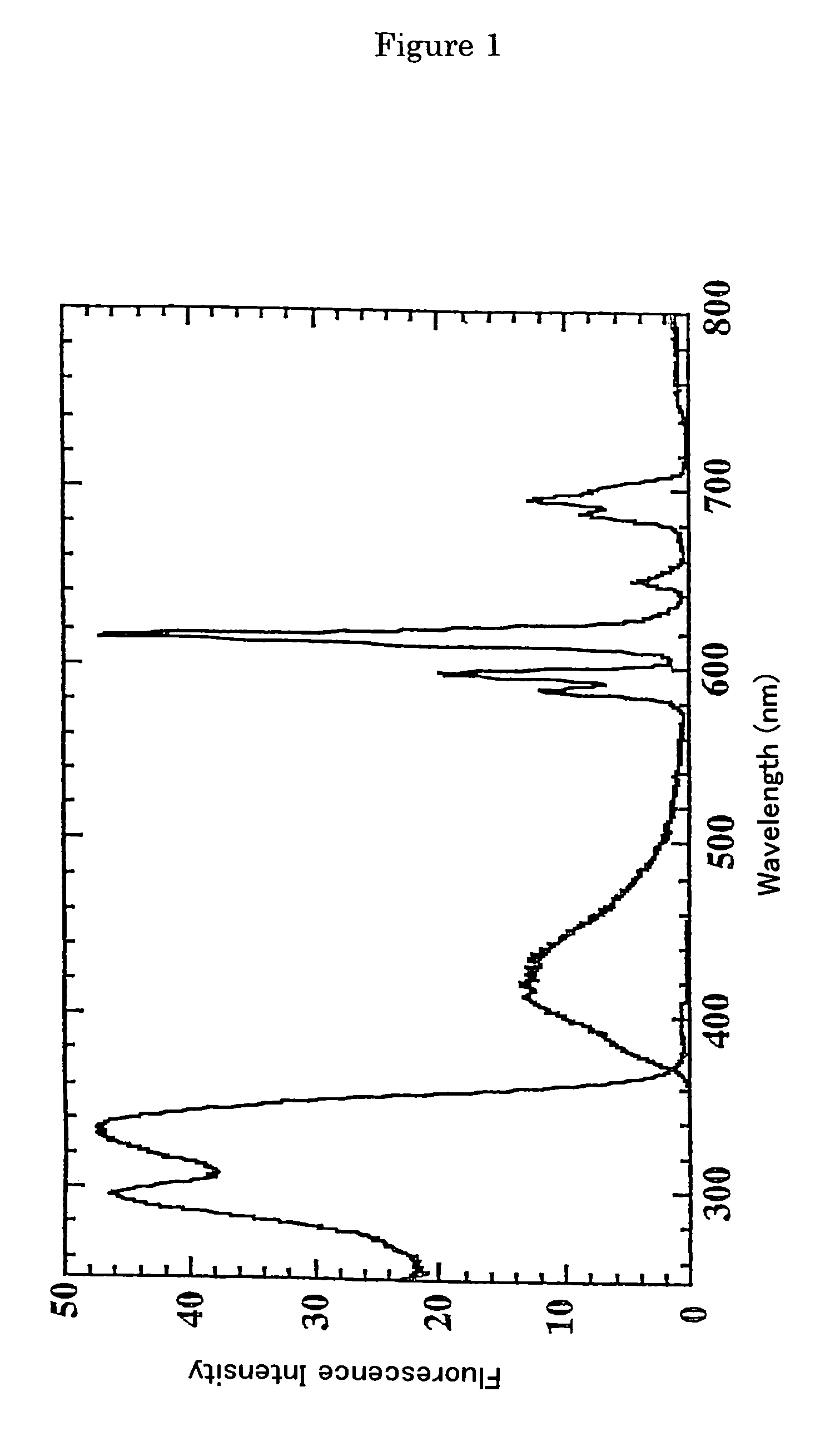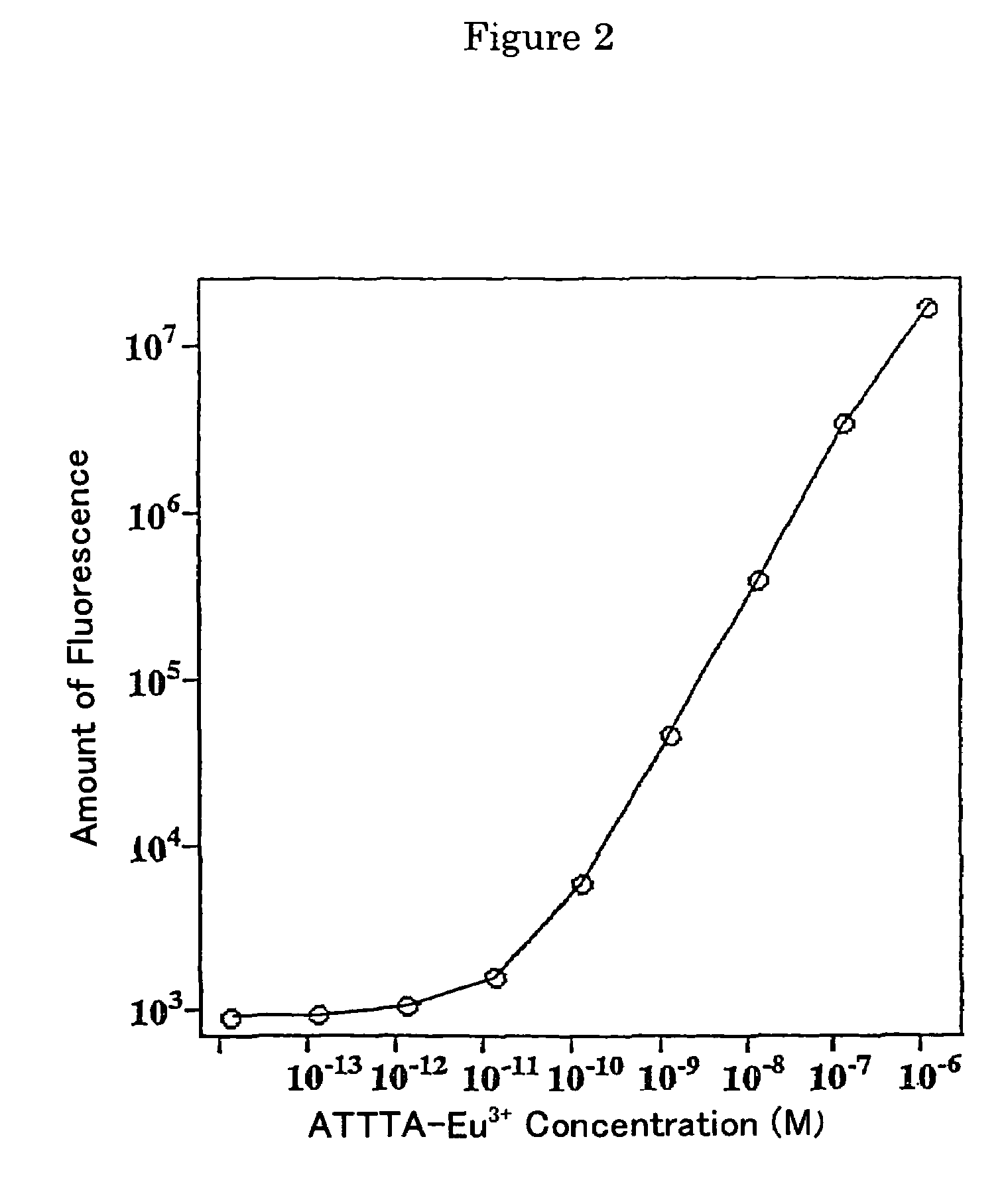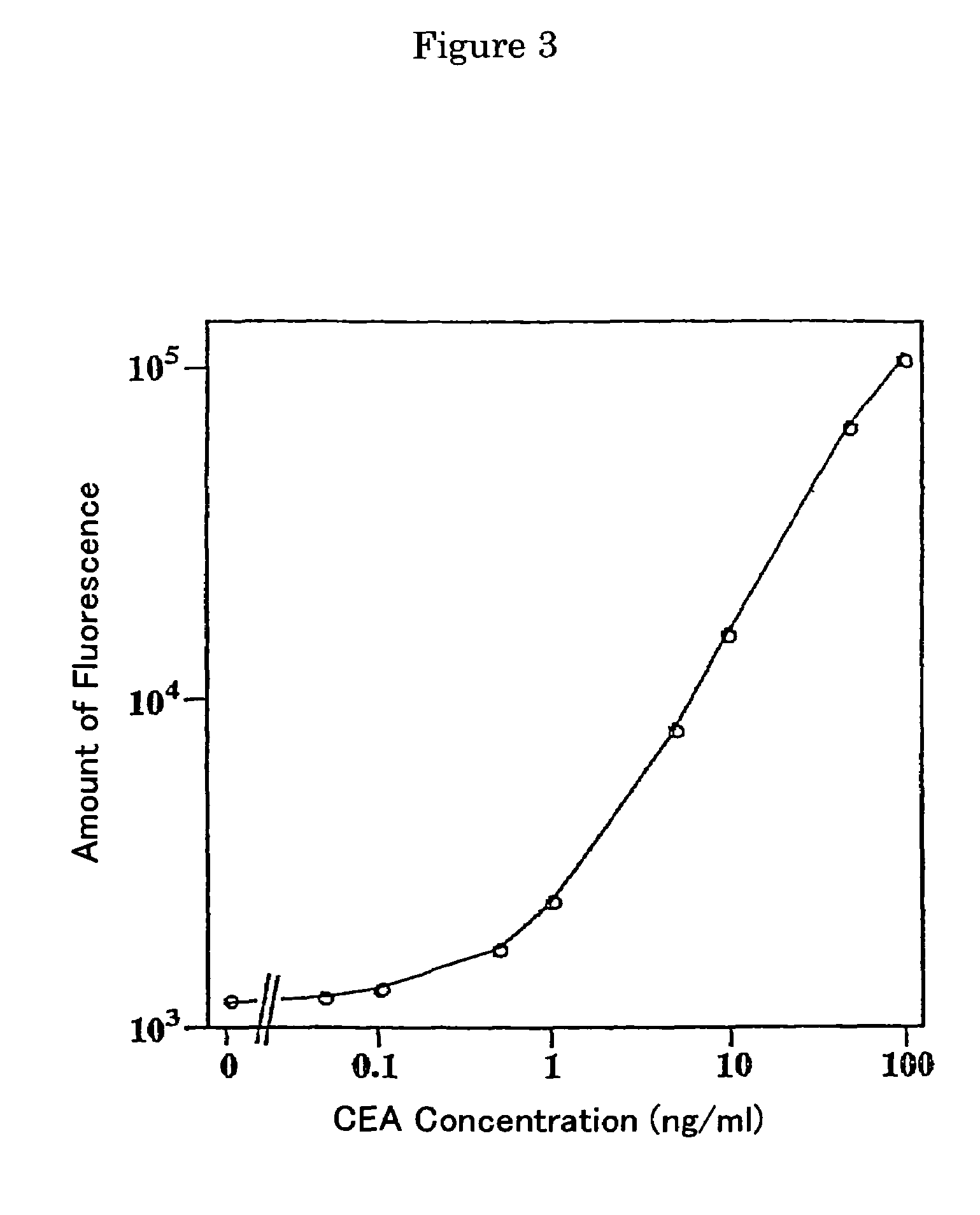Fluorescent label compounds
a fluorescence label and compound technology, applied in the field of fluorescent label compounds, can solve the problems of low reproducibility, reduced activity of enzymes and labeled substances, and risk of radioactive isotope storage, and achieve the effects of long fluorescence lifetime, sufficient fluorescence intensity, and stable enough
- Summary
- Abstract
- Description
- Claims
- Application Information
AI Technical Summary
Benefits of technology
Problems solved by technology
Method used
Image
Examples
example 1
Synthesis of N,N,N′,N′-[(4′-(5′″-amino-2′″-thienyl)-2,2′:6′,2″-terpyridine-6,6″-diyl)bis(methylenenitrilo)]tetrakis(acetate) (abbreviated as ATTTA)
(1) Synthesis of 4′-(2′″-thienyl)-2,2′:6′,2″-terpyridine [Compound (1)]
[0095]N-[2-(pyrido-2′-yl)-2-oxoethyl]pyridinium iodide (16.3 g, 50 mmol), (E)-3-(2″-thienyl)-1-(pyrido-2′-yl)-2-propenone (10.76 g, 50 mmol) and ammonium acetate (23.1 g) were added to 500 ml of dried methanol, then the solution was refluxed for 24 hours while stirring. The reaction solution was cooled and a precipitate was obtained by filtration. After the precipitate was washed thoroughly with chilled methanol, recrystallized from acetonitrile, thus the compound (1) was obtained. The yield after vacuum drying was 43.8%. The product was confirmed to be the target compound by 1H NMR.
[0096]1H NMR (CDCl3): δ8.74 (d, J=7.9 Hz, 2H), 8.69 (s, 2H), 8.64 (d, J=7.9 Hz, 2H), 7.87 (t, J=7.9 Hz, 2H), 7.78 (d, J=3.6 Hz, 1H), 7.44 (d, J=5.1 Hz, 1H), 7.38-7.32 (m, 1H).
(2) Synthesis ...
example 2
Synthesis of [4′-(5′″-amino-2′″-thienyl)-2,2′:6′,2″-terpyridine-6,6″-diyl)bis(methylene-nitrilo)]-N:N′,N:N′-bis(3,6-dioxa-triethylene) (abbreviated as ATTBB)
(1) Synthesis of [4′-(5′″-nitro-2′″-thienyl)-2,2′:6′,2″-terpyridine-6,6″-diyl)bis(methylene-nitrilo)]-N:N′,N:N′-bis(3,6-dioxa-triethylene)
[0120]4′-(5′″-amino-2′″-thienyl)-2,2′:6′,2″-terpyridine-6,6″-dibromomethyl (1.09 g, 2 mmol) was dissolved in 150 ml of CH3CN, and 2.1 mmol of 4,13-diaza-18-crown 6-ether and 20 mmol of K2CO3 were added, then the solution was refluxed for 24 hours while stirring. The insoluble substances were removed by filtration, and the solvent was removed under reduced pressure. The product was purified with a silica gel column (developing solvent: CH2Cl2—CH3OH=9:1 w / w). The yield was 65.3%. The product was confirmed to be a complex of KBr with the target compound (1:1, M.W.=765.727) by FAB-MS.
[0121]FAB-MS: measured value: 766
(2) Synthesis of [4′-(5′″-amino-2′″-thienyl)-2,2′:6′,2″-terpyridine-6,6″-diyl)bis(...
example 3
Synthesis of N,N,N′,N′-[2,6-bis(3′-aminomethyl-1′-pyrazolyl)-4-(5″-amino-2″-thienyl) pyridine]tetrakis(acetate) (Abbreviated as BAPTA)
(1) Synthesis of 2,6-dibromo-4-(2′ thienyl)pyridine [Compound (11)]
[0124]4-amino-2,6-dibromopyridine (3.25 g, 12.9 mmol) and 12.9 g of thiophene were dissolved in 250 ml of acetic acid, and 1.93 g of isoamyl nitrate was added while stirring. The mixture was stirred for 24 hours at room temperature, and further stirred for 3 hours at about 45° C. The solvent was removed under reduced pressure, and the residue was neutralized with 40 ml of 10% K2CO3 aqueous solution, then extracted with CHCl3 (4×60 ml). The organic layer was dried with Na2SO4, and the solvent was removed under reduced pressure, then the residue was purified with a silica gel column (developing solvent: CH2Cl2—CH3OH=9:1 w / w). Furthermore, the product was recrystallized with methanol twice, thus the compound (11) was obtained. The yield was 47.9%.
[0125]Results of elementary analysis (C9H5...
PUM
| Property | Measurement | Unit |
|---|---|---|
| temperature | aaaaa | aaaaa |
| temperature | aaaaa | aaaaa |
| temperature | aaaaa | aaaaa |
Abstract
Description
Claims
Application Information
 Login to View More
Login to View More - R&D
- Intellectual Property
- Life Sciences
- Materials
- Tech Scout
- Unparalleled Data Quality
- Higher Quality Content
- 60% Fewer Hallucinations
Browse by: Latest US Patents, China's latest patents, Technical Efficacy Thesaurus, Application Domain, Technology Topic, Popular Technical Reports.
© 2025 PatSnap. All rights reserved.Legal|Privacy policy|Modern Slavery Act Transparency Statement|Sitemap|About US| Contact US: help@patsnap.com



